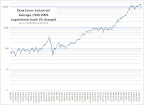A sample text widget
Etiam pulvinar consectetur dolor sed malesuada. Ut convallis
euismod dolor nec pretium. Nunc ut tristique massa.
Nam sodales mi vitae dolor ullamcorper et vulputate enim accumsan.
Morbi orci magna, tincidunt vitae molestie nec, molestie at mi. Nulla nulla lorem,
suscipit in posuere in, interdum non magna.
|
By Ken, on February 10th, 2009
I finished watching Secretary Geithner’s press conference on the bank rescue package. Much of the information can or will be found on www.financialstability.gov. My initial reaction was to write a post on the private equity portion of the bank rescue, that is the Treasury’s plan to use government guaranty funds to mobilize private capital. That post will take some time to write as I want to explain the history of the concept, the pluses, the minuses and a proposed structure. What I did realize over the past hour was that this administration has a Herculean task ahead of it, setting up such a fund (and this is only one part of the plan) will not be easy, nor will it be assured of success. Here is my initial take:
Who is private equity?
To show just how far behind Secretary Geithner is in planning this phase of the rescue, he did not define what private equity is. The largest definition is that it is investment in any instrument that is not traded publically, though many private equity funds may have mixed portfolios of public shares and private investments. The definition is important because different PE players have different skill sets, a hedge fund is different from an LBO shop, which is different from venture capital which is different from a fund of funds. So what are these bank assets and who buys them?
(The when, what, why, how and some existing US Government private equity programs after the jump . . . )
Continue reading “Treasury Bank Public Private Equity Fund” »
By Ken, on February 10th, 2009
Treasury Secretary Tim Geithner will be giving a press conference in follow-up to President Obama’s speech and press conference last night regarding the economic stimulus. What will be interesting to watch is any information on the public-private purchase of impaired bank assets. This will certainly be an interesting way to recapitalize the banking system. However, having worked in private equity (with public-private funds) for a number of years, there are number of things to look for. Let’s hear Secretary Geithner out, then come back here for some analysis.
If you are looking for the conference live on the internet, Bloomberg TV usually carries a live feed and is easily available (no guarantees, though). Go to: http://www.bloomberg.com/tvradio/tv/index.html
Or try CNBC.
. . . And that’s how it goes
By Ken, on February 9th, 2009
The Senators debating the economic stimulus package could do well to learn a lesson in quantum physics. As an object approaches a black hole, it will cross a threshold where the escape velocity (the speed you need to go in order to break free from the massive gravitational pull of the black hole) is greater than the speed of light itself. To an observer outside of the event horizon, everything going in appears to stand still, but anything inside will be squashed like a bug.
Government economic management and physics
Government economic policymaking is like piloting a space ship around a black hole. The ship can be made to reach escape velocity and get away safely or it can fall in to the black hole and be crushed under the force of super-massive gravity. In physics, the point just before falling in to the black hole is the event horizon and it is that point our policymakers are about to take us to.
What happens in an economic black hole?
An economic black hole is the equivalent of a depression, revolt, war or massive natural catastrophe. Despite the IMF’s pronouncement that we are already in a depression, we are not in a depression yet, because we have not had the complete implosion of value accompanied by systemic collapse that is the hallmark of a depression.
(More on reaching singularity, escape velocity and the event horizon below the jump)
Continue reading “The Economic Stimulus Event Horizon” »
By Muckraker, on February 9th, 2009
“All the news that fits, we print!”
This is the news summary from mainstream media sources (MSM), blogs, financial professionals and our analysis. We provide this to give you a short overview of what is happening in the world based on some of this blog’s themes (international finance, charts, markets, and so on). Please comment so we can improve our selection to make this section useful.
Global summary
U.S. markets were down slightly mid-day (realistically, unchanged) as we await President Obama’s press conference at 8:00pm ET. Global markets were mixed, again waiting word on US rescue packages. The real surprise is in the currency markets with the US Dollar down everywhere, notably against the British Pound (down .85%). Treasury yields are also much higher with 3.05% for the 10-year, 3.7% for the 30-year (see the UK Telegraph article, below).
Dissecting the Financial Crisis
- A YouTube video from a C-SPAN call in with Rep. Paul Kanjorski (D-PA) is up describing some of the Fall 2008 TARP approval process. There is no reason to doubt Rep. Kanjorski’s narration, however, the reasons for passing the TARP remain dubious. For instance, if there really was an electronic run on the banks, couldn’t the Fed have stepped in and either used its authority to “print money” or declare a bank holiday (link to PDF file)? Two, the supposed run started the same day Lehman Brothers declared bankruptcy. The video appears below:
US Markets
- General Electric (GE) shares were up nearly 15% mid-day on hopes for a bank rescue package. Actually, a possible dividend cut helped boost share prices. GE has suffered from the financial crisis and from the possibility that it may lose its AAA credit rating. (Note, authors of this blog may hold a position in GE shares, please read our disclaimer).
Politics
Internet
- Top tech blogger Robert Scoble discovers what might be the Google killer. In Is the Real-Time Web a Threat to Google Search? Scoble notes that sites like Twitter and Friendfeed are able to perform social-based searches using a large set of metadata gleaned from your friends and contacts recommendations. In other words, searches that are a lot more useful than Google.
From the Blogosphere
- In Pitchfork Watch, The Cunning Realist links to protests outside the house of William Frey, CEO of Greenwich Financial Services, LLC. Such protests, not a good sign.
- UK Telegraph’s Ambrose Evans-Pritchard (in MSM columnist mode) notes that the US Fed will have problems financing all the new debt required to pay for the TARP, stimulus, tax shortfalls, etc, … Meanwhile the global economy continues to fall apart absent any real action.
By Muckraker, on February 6th, 2009
“All the news that fits, we print!”
This is the news summary from mainstream media sources (MSM), blogs, financial professionals and our analysis. We provide this to give you a short overview of what is happening in the world based on some of this blog’s themes (international finance, charts, markets, and so on). Please comment so we can improve our selection to make this section useful.
Global summary
U.S. markets improved on hope for stabilization of the banking sector. Despite huge drops in Citigroup and Bank of America, it appears that the soon to be released stimulus will do something to boost the sector. Strangely, retail earnings also gave a lift to the market. Discounters Wal-Mart, Target and Ross have all met or beat expectations despite the general collapse in sentiment among higher tier retailers and large corporates like Microsoft and Cisco. The Dow closed up 1.34%, S&P up 1.64%, gold and oil were off slightly.
Alternative Assets
International Markets
Politics
- Perhaps an attempt is being made to mollify Paul Volcker, an Obama adviser who has largely been sidelined by Larry Summers and Tim Geithner. President Obama, with Volcker at his side, is expected to announce an economic recovery panel modeled on the lines of the foreign intelligence advisory board.
- Bloomberg reports that the stimulus package bank executive pay caps are more PR stunt than reality. The caps will not apply to already received monies. Also, executives can be compensated in ways other than salary (boats, cars, jets and other perks). Finally, the treasury department will retain discretion to decide who is executive enough to fall under the salary caps and who to whom they should not apply. Clusterstock calls the pay caps a “joke”.
From the Blogosphere
- William Buiter at Maverecon has a new term to describe the U.S. and U.K. – submerging market. Buiter argues that the crisis of leadership accompanying the financial crisis drives the “developed” economies down to the realm of corruption and debt seen in other “emerging” markets. Submerging market, a phrase I think we will, unfortunately, be seeing more of.
So from all of us in the submerging world,
By Muckraker, on February 5th, 2009
“All the news that fits, we print!”
This is the news summary from mainstream media sources (MSM), blogs, financial professionals and our analysis. We provide this to give you a short overview of what is happening in the world based on some of this blog’s themes (international finance, charts, markets, and so on). Please comment so we can improve our selection to make this section useful.
Global summary
The markets seem to be in a sort of malaise. US stocks were down yesterday 0.75% for the S&P, the Dow was down 1.51%. Gold reached 901.6 while oil barely moved at 40.30. The dollar gained against major European currencies. Obama’s economic stimulus plan and failure to move it through Congress fast enough (or in tact) weigh on already negative sentiment which faces more bad news every day.
Alternative Assets
- Clusterstock notes the growing market for secondary offerings of private equity limited partnerships (LP stakes). The market is mainly LPs who cannot or don’t want to fulfill their LP commitment to their funds and are willing to sell their LP investment at a steep discount (kind of like a private equity pawn shop).
International Markets
Politics
- Bloomberg reports that Obama economic adviser and former Fed Chair Paul Volcker may not be getting along with National Economic Council Director Larry Summers, thus leading to some of the policy roadblock we see in Washington.
From the Blogosphere
By Ken, on February 4th, 2009 
We wanted to start the new blog site with a chart on the Dow Jones since 1900 to 2009 (present day) to show that nothing has really moved since we last produced our market chart. This is good news and bad news. The good is that no down side break-out occurred over the past few months, in other words, we are not sitting at Dow 4000. The bad news is that no break-out at all occurred, we are still testing lows in the 8000 range and waiting for the Obama administration to get its stimulus package completed in Congress. Lack of a package could drive the market lower.
Update ( Feb 23, 2009): Our latest Dow chart is our Update from February 20 (please click on the link). The post includes a 1900-2009 Dow chart and a 1997-2009 chart. You can see all of our latest chart posts including the Dow, Dow performance for President Obama, Dow history, oil and gold at globalfinance.net/category/charts/.
Logarithmic Dow chart 1900-2009
We updated our Dow chart to show the 1900-2009 time line. You can view the chart here (click on the chart to view the full-size image):
The log chart shows the change in the Dow over time in percentage terms. You can find out more about log charts on The Motley Fool’s FAQ which explains the difference in non-technical terms. What we can take away from the current chart is that if we buy the story that today’s crisis is like the Great Depression, then the market still has a long way to go. On the other hand, if things stabilize then the worst may be over.
To get some perspective, let’s look at some other time periods below the jump…
Continue reading “Dow Jones 1900-2009 Log Chart February 4” »
Page 3 of 6«12345...»Last »
|
|







